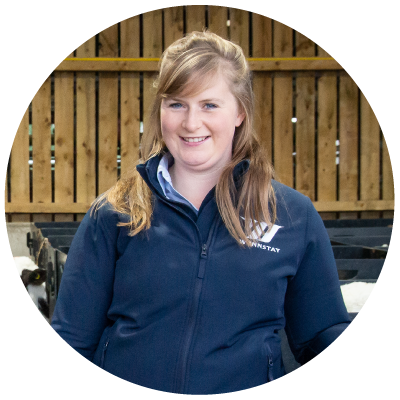What are the benefits of feeding calves more?
The calves natural feeding behaviour is to suckle off their dam little and often like an ad-lib system. Suckled calves would have around 10/15L of milk a day which is always fresh and warm, giving them more than 1.5kg of dry matter per day from milk. This is coupled with lower solid feed concentration intake and gradual rumen development.
For many years, milk has been restricted to keep feed and labour costs low, however recent studies show that feeding more milk, as close to ad-lib as possible in early life, has shown increased daily live weight gain, earlier onset to puberty, resilience to disease, as well as the potential for higher milk production sustained over multiple lactations.
The most important factors for young calves are health, nutrition and environment. Nutrition at a young age is extremely important as this is when the best feed conversion rates are achieved, the more milk we feed them better the return on investment. Feeding calves as close to ad-lib on a good quality milk replacer with access to clean water and starter feed helps to maximise those targets and achieve lifetime performance - you only have one chance to capture this potential.
Optimal development
It has been proven that an elevated nutrition plan has positive effects on organ development and gene expression. Research has shown that the majority of organ development - heart, liver, lungs and muscle occurs within the first 50 days of life with continued development until day 600.
In the first few weeks, calves don’t eat much starter feed so are almost entirely dependent on the nutrition from milk or milk replacer, feeding more of this will help maximise their performance and achieve their full potential. Feeding an elevated plane of nutrition in early life supports rapid calf growth. The calf should be a minimum of double the birth weight by weaning and be 55-60% of mature body weight for first breeding. The most profitable time for calving heifers is 24 months, they will outperform later calvers over their first five years of life.
The development of mammary tissue is essential for the future productivity of the cow. Studies have shown that cells within the mammary gland are nutritionally responsive in the early neonatal period. Increased nutrient intake to achieve higher daily live weight gain in pre-weaned calves is a key factor in stimulating udder development in calves and heifers resulting in greater milk yields. Calves fed an enhanced feed plan had more mammary parenchymal mass.


Image supplied by Amelia Hull
Resilience to disease
Disease can be a big problem in calves, it is very important to give high-quality colostrum quickly, practice sound hygiene in the calf shed and support calves with a high plane of nutrition. Feeding higher amounts of quality milk replacer will give the calf increased energy giving more support for the immune system. This will help the calf cope better with environmental fluctuations e.g. periods of cold weather. Feeding a calf an enhanced feed plan through a teat will satisfy its sucking reflex and reduce the need for the calf to suck elsewhere, including other calves’ navels, gates etc. This will also be a contribution to reducing disease that could be picked up from the environment.
Longevity
Young calves are the future, they will repay the investment through higher milk production and longer productive life, so giving them the best start is vital. Survivability and a high lifetime milk yield is very important, the cows need to last more than one lactation and reach their full milk yield potential to pay back rearing costs and become a profitable animal for dairy farmers. So, the more litres of milk-fed, the more quality nutrients to help the animal grow, develop and build immunity to disease, giving them the best chance to live a long, productive life.
Conclusion
Calves need the best start in life to reach their full potential, aiming high to hit targets for growth, development, fertility, survivability, and lifetime yield. Feeding more amounts of milk per calf provides an increased energy supply, giving them more chance to grow and develop as well as a higher resilience to disease and, therefore, a higher chance of achieving their full potential. The more you invest pre-weaning, the more benefit you will realise in the long-term - so don’t be afraid to increase the litres fed per calf and increase production rates.


Image supplied by Amelia Hull










